The Story of Lake Restoration
These aquatic ecosystems provide vital ecosystem services for communities worldwide; more than half are drying up and disappearing.
Lakes: The Introduction
Lakes are critical ecosystems for aquatic wildlife and provide countless ecosystem services for communities worldwide. Explore this StoryMap to learn more about lakes as ecosystems, their sources of degradation, common restoration methods, and five unique case studies!
To define a lake in the simplest of terms –a lake is an “enclosed basin filled or partly filled with water.” (Minnesota DNR, n.d.) However, things get murky once one explores a strict definition deeper than that.

There is no set size differentiation between a lake and a pond or set depth differentiation between a lake and a wetland. While lakes can have an inlet/outlet, they can also be completely isolated (land-locked) (Minnesota DNR, n.d.).

Possibly, the best way to determine whether a body of water is a lake is to examine whether it undergoes thermal stratification or a mixing of warmer and cooler water.
Thermal stratification, also known as lake turnover, occurs when cold and dense water that settles in the lower layers of the basin (the hypolimnion) warms up. This warming causes the cold and dense water molecules to rise and "mix" with molecules in the warmer upper layers (the epilimnion is the top layer, and the thermocline is the middle mixing zone).
This typically occurs seasonally in the fall and spring as temperatures shift from cool to warm. Some lakes experience thermal mixing multiple times per year (polymictic), twice a year during fall and spring (dimictic), or just annually (monomictic).
(Woolway et al., 2021)
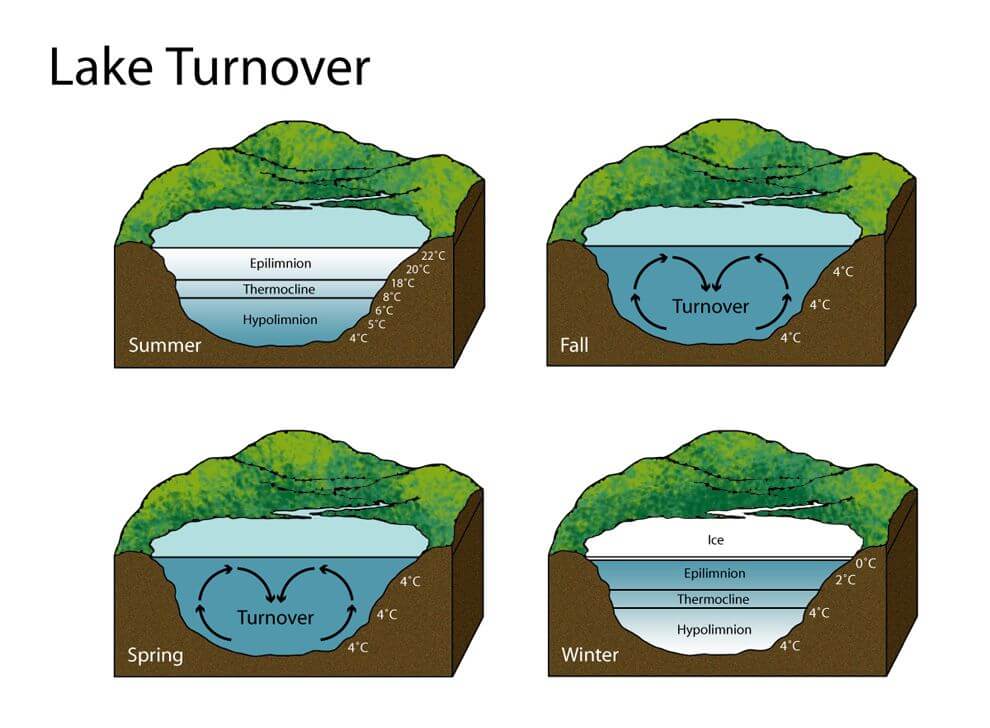
For the sake of cohesion within this StoryMap, we are following the standards set by the International Institute for Sustainable Development (IISD) and have set a baseline for lakes as being greater than one hectare, having a depth of greater than 2.5 meters, and they are permanent water bodies, meaning they do not appear or disappear seasonally.
(Anderson, 2020)
Lake Formation
About half (52%) of the lakes in the United States are naturally occurring, while the other half are man-made. These man-made lakes are typically constructed using dams and may be created to provide communities with a consistent water supply or serve as flood mitigation.
(EPA, n.d.; Boulange et al., 2021)
Natural Lake Formation Examples
What does it mean to be naturally occurring? Natural processes formed the basin and watershed to allow the resulting basin to be permanently filled with water. Some types of natural formations are listed below:
Natural Lake Formations: Click each icon in the top left corner to learn more.
Ecosystem Services
Out of all the water on earth, surface freshwater only comprises about 2.5% of the total water resources (The Water School USGS, 2019). Of that 2.5%, water within lakes makes up about 20.9% of all freshwater resources (The Water School USGS, 2019). While lakes may not have the majority share of freshwater worldwide, they provide countless critical ecosystem services for communities and individuals, the largest of which is likely their ability to provide fresh drinking water. The following table outlines a handful of these key ecosystem services, the service category they fall under, and the direct community and ecological benefits associated with each.
Service Category | Service Example | Community and/or Ecological Benefits |
|---|---|---|
Provisioning | 1. Drinking Water 2. Commercial and Subsistence Fishing 3. Hydroelectric Power | 1. Just twenty-one of the world's largest lakes provide over 5 billion m3 of potable water annually. 2. These twenty largest lakes provide 1.35 million tonnes of harvested fish annually. 3. The same lakes can also generate 62.2 GW of hydropower. (Sterner et al., 2019) |
Cultural | 1. Recreation and Tourism 2. Aesthetic Appreciation 3. Spirituality | 1. Estimates suggest that recreation and tourism from the twenty largest lakes generated a total of $6.2 billion/year for communities surrounding lakes. 2. The aesthetic value of lakes encourages individuals and communities to connect with their natural resources. 3. Spiritual connection to water bodies such as lakes is a vital tradition for communities worldwide. (Sterner et al., 2019; Schirpke et al., 2022) |
Supporting | 1. Nutrient Cycling 2. Biodiversity 3. Primary Production | 1. Lakes serve as nutrient sinks, balancing out the excess Nitrogen and Phosphorus commonly found in water resources due to agricultural and stormwater runoff. 2. Lakes are 'biodiversity hotspots' providing habitat and sustenance to aquatic and terrestrial plant and animal life. 3. Primary productivity (biomass growth at the bottom of the food chain) generally occurs in the littoral zone or shoreline areas and contributes to ecosystem balance. (Shi et al., 2021; Heino et al., 2021, Puts et al., 2022) |
Regulating | 1. Climate Regulation 2. Flood Mitigation 3. Water Purification | 1. Large lakes can help regulate local climates as the air over lakes is generally cooler than the surrounding areas. 2. Lakes can act as natural buffers and absorb stormwater runoff, reducing the risk and effects of flooding during extreme weather. 3. Natural processes such as thermal mixing help reduce pollutant inputs to the watershed. (Penn State Extension, 2023; EPA, 2015; Shi et al., 2021) |
Sources of Degradation
Now that we know some background information about lakes and their importance, it's time to dive into some of the threats to their existence and subsequent ecosystem services. There are many threats to the health and functioning of lake ecosystems, looking specifically at waterbodies in the Great Lakes Region:
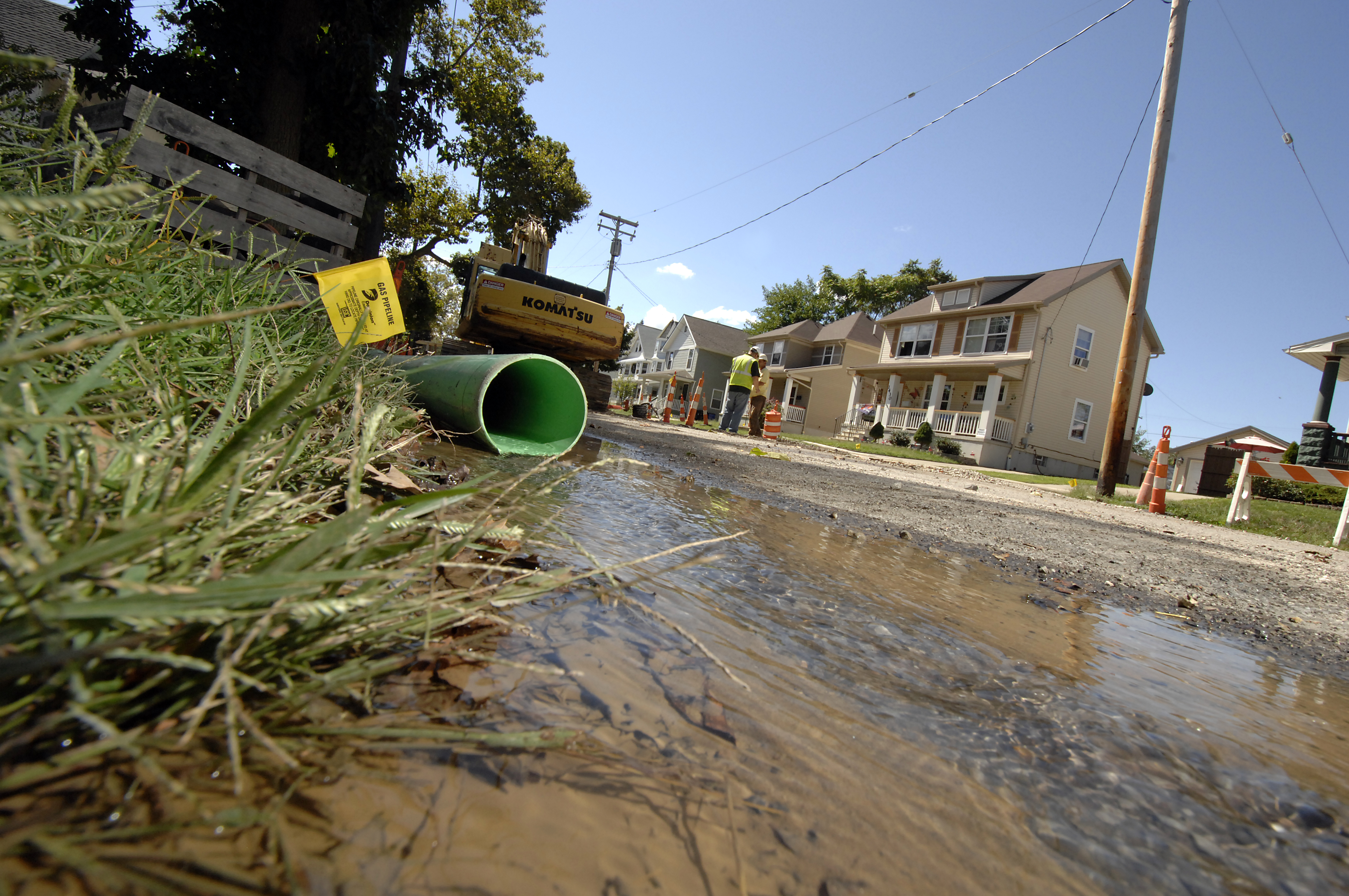
Urban Development
The increasing growth of cities such as Cleveland, OH, has led to higher impervious surface cover: materials like concrete and asphalt that prevent rainwater from absorbing into the soil and accelerate runoff.
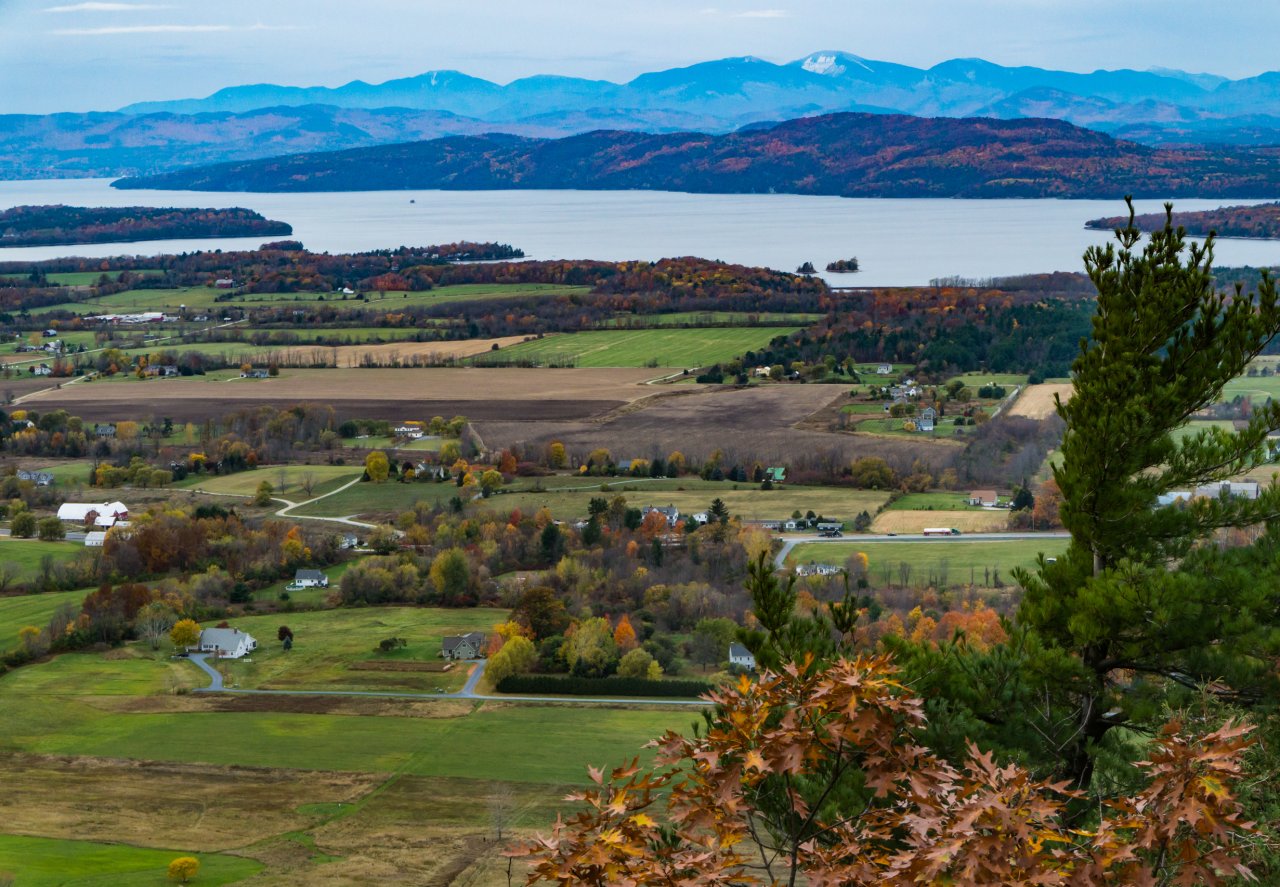
Agricultural practices
Farms often over-apply high amounts of nutrient-rich fertilizer to their fields, which can runoff into nearby lakes.
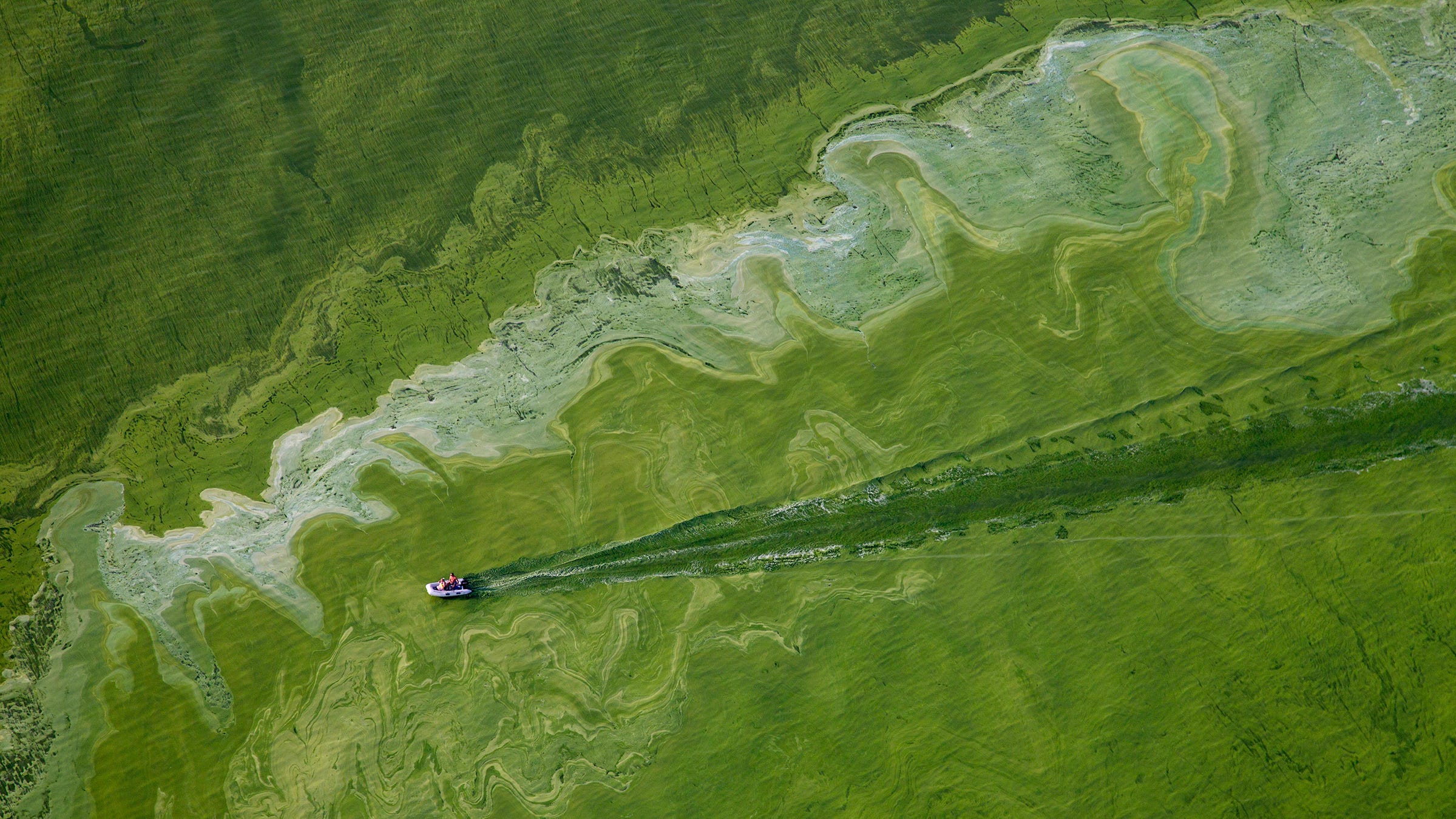
Eutrophication
Excess nutrient pollution, or eutrophication, often occurs in lakes with highly agricultural watersheds. This high nutrient availability can lead to rapid algal growth events, also called algal blooms. These algae may be toxic to humans and animals and can lead to other problems for lakes, like oxygen depletion.

Sewage Contamination
Without proper wastewater treatment, sewage pollution into lakes can also lead to eutrophic conditions and algal blooms, and pose a public health risk to people who use the lake.

Mercury Contamination
Mercury contamination - Mercury can find its way into lakes by both natural sources, like geologic deposits, and human sources, including coal combustion and mining. Once in aquatic ecosystems, mercury bioaccumulates in fish, negatively impacting the entire food chain.
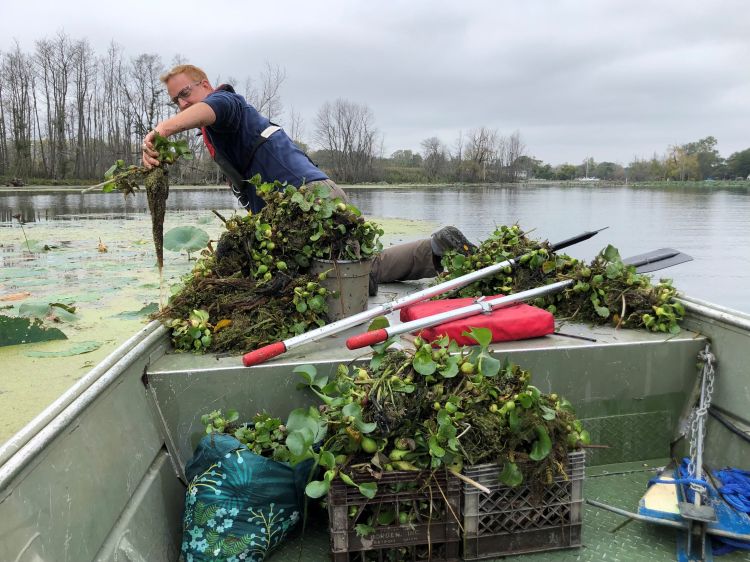
Invasive Species
Like in many ecosystems, invasive species in lakes crowd out native species and alter ecosystem processes.
Restoration Methods
So how do we address these threats? Lake restoration methods largely fit into two categories: in-lake and out-of-lake or watershed methods.
In-lake methods refer to those that occur within the lake, thus seeking to reverse or lessen degradation where it has already occurred.
In-Lake Restoration Methods
In-lake methods refer to those that occur within the lake, and thus seek to reverse or lessen degradation where it has already occurred ( Tammeorg et al., 2024 ). Some in-lake practices include sediment dredging to maintain lake depth. Many lakes gradually fill in with sediment carried by tributaries or floodwater. Sedimentation is often a concern for lakefront property owners who fear the value of their homes will decline if the lake is not maintained ( Guide to Lake Protection and Management, 2004 ).
In lakes that have prolonged stratification (or no circulation or mixing in the case of some smaller lakes and ponds), the natural process of stratification may negatively affect lake organisms. In these systems, the bottom of the lake remains oxygen-depleted, preventing the growth of aquatic plants ( Algal Blooms, n.d. ). To address issues, lake managers and restorationists may use lake aeration to increase water circulation and dissolved oxygen concentrations ( Mostefa & Ahmed, 2012 ).
In-lake restoration methods also target nutrient pollution. Some minerals like clays and aluminum salts bind easily to phosphorus, immobilizing it as the particles move through the water column. A study of eutrophic lakes in China found that phosphorus inactive clay effectively reduced total phosphorus concentrations (maximum removal efficiency of 97.7%) and decreased the abundance of toxic phytoplankton ( Su et al., 2016 ).
Invasive and nuisance species control is another common lake restoration method, which ranges from using rakes and other devices to remove aquatic plants (e.g., watermilfoil) to increased fishing and consumption of invasive fish (e.g., Asian carp; Eurasian Watermilfoil Control Options, n.d. ; Hagler, 2023 ). Physical removal is often a short-term solution. Other methods of in-lake invasive species control include using herbicides as well as preventative measures like thoroughly washing boats and equipment ( Eurasian Watermilfoil Control Options, n.d. ; Keeping Shoreland and Lakes Free of Invasive Species, n.d. ).
Watershed Restoration
Watershed restoration methods are those that seek to improve conditions on land to reduce pollution downstream. Riparian buffers, or strips of forest lining lakes and streams, help reduce pollution by absorbing runoff and filtering pollutants from nearby land uses, like suburban, agricultural, and urban land, and stabilizing sediment at the lake shore ( Riparian Forest Buffers, n.d. ). A study of various vegetated buffers around a eutrophic freshwater lake in China found that wetland and a mixture of grass and forest buffers reduced total phosphorus pollution, while grass buffers most efficiently reduced total nitrogen loading. Wetland restoration serves a similar function ( Cao et al., 2018 ). With their high water holding capacity, wetlands can absorb pollutant runoff during storm events and reduce runoff. Wetland restoration models in the Lake Champlain Basin predict that phosphorus loading would decrease by 2.6% in a low restoration scenario and 5.1% in a high restoration scenario ( Singh et al., 2019 ).
Watershed restoration methods also target urban sources of pollution. Structures like rain gardens and bioretention cells reduce the impact of impervious surface cover by allowing stormwater to percolate into the soil, similar to riparian buffers. A study in Syracuse, New York, found that a green roof in the city retained an average of 96.8% of stormwater and served as a sink for total nitrogen and total phosphorus ( Carpenter et al., 2016 ).
Lake restoration and maintenance may also involve water level management. Lake managers can manipulate water levels through opening and closing dam valves ( Lowering Water Levels, 2024 ). Water levels may be lowered by releasing water from the lake in preparation for a severe storm to reduce flood impacts ( Lowering Water Levels, 2024 ). In arid ecosystems, water levels may be maintained by reducing outflow from damming with potential downstream impacts ( Hannoun & Tietjen, 2023 ).
Regulatory and Funding Structure: U.S. Examples
Regulation
Lake management and restoration may vary across the globe with different regulatory structures preventing or furthering restoration practices. Lakes in the United States are typically governed through a combination of federal, state, and local regulations.
The federal government maintains some authority over lakes. Agencies including the Environmental Protection Agency (EPA), the Army Corps of Engineers, and the U.S. Fish and Wildlife Service have jurisdiction over lakes. The Clean Water Act (CWA) governs the discharge of pollutants into waters of the United States (WOTUS; Todd, 2022 ). The basis of the CWA was enacted in 1948 and was expanded in 1972 ( US EPA, 2022 ). Under the Act, the EPA has implemented pollution control programs and has developed national water quality recommendations for pollutants in surface waters ( US EPA, 2022 ).
The Cuyahoga River, a tributary to Lake Erie, was so heavily polluted by industry that it caught fire two years after the left image was captured , motivating the passage of the CWA.
Supreme Court rulings and agency rulemakings that define the reach of the Clean Water Act create considerable outcomes for the protection of United States waters ( Todd, 2022 ). Which water bodies are considered WOTUS determine if they will receive protection under the CWA ( Todd, 2022 ). In May 2023, the Supreme Court ruling in Sackett v. EPA greatly limited the waters that receive federal protection, especially wetlands ( Datla, 2023 ). Under the new rule, protected waters must be “relatively permanent,” connected to traditional interstate navigable waters, and have a “continuous surface connection” to other jurisdictional waters ( Todd, 2022 ; 88 FR 61964 ). While many lakes are protected as WOTUS under this new rule ( 88 FR 61964 ), those that have similarities with wetland features or those that are not classified as interstate waters, do not serve as tributaries to other WOTUS, or fail to fulfill any other requirement under section 120.2 (including relative permanence) may now be at risk of degradation from development ( 88 FR 61964 ; 40 CFR 120.2(a) ).
State governments are responsible for managing lakes within their borders. North Carolina has a Department of Environmental Quality provide surface water standards to protect lakes, rivers, streams, and other surface waters located in the state ( Surface Water Standards | NC DEQ, n.d. ). In North Carolina, water quality standards are implemented through National Pollutant Discharge Elimination System (NPDES) permits, water quality benchmarks for the Stormwater Permitting Program, and the development of Total Maximum Daily Loads (TMDLs) ( Surface Water Standards | NC DEQ, n.d. ). States are required under the Federal Water Pollution Control Act (another name for the CWA) to review their water quality standards and classifications every three years to protect the waters of the state ( Surface Water Standards | NC DEQ, n.d. ).
The governance and regulatory structures surrounding the Great Lakes differ from other regions in the U.S. The Great Lakes are not governed by distinct borders, but fall under the management of the U.S., Canada, international agencies, and many local governments ( MacDonald, 2017 ). The Great Lakes exemplify a multi-jurisdictional system that faces difficulty in addressing the multifaceted issues that revolve around the lakes ( MacDonald, 2017 ). Treaties such as the Boundary Waters Treaty and the Great Lakes Water Quality Agreements (GLWQA) have been put into place to govern the Great Lakes ( MacDonald, 2017 ). The Boundary Waters Treaty works to protect the natural resources of the Great Lakes, dispute resolution mechanisms, and provide procedures for information exchange ( MacDonald, 2017 ). The GLWQA was created by Canada and the U.S. in response to pollution to provide specific objectives for protecting and maintaining the water quality of the Great Lakes ( MacDonald, 2017 ; Great Lakes Water Quality Agreement (GLWQA), n.d. ).
Funding
The U.S. recently saw a considerable increase in restoration funding from the Bipartisan Infrastructure Law (BIL) and Inflation Reduction Act (IRA). These laws have allocated hundreds of millions to billions of dollars for ecosystem restoration and other resilience-building activities, including $1.4 billion for “Ecosystem Restoration and Resilience” and $74.4 million for coastal habitat restoration and management from the BIL, as well as $700 million from the IRA for conservation and restoration on public lands ( Bipartisan Infrastructure Law Supports Ecosystem Restoration, n.d. ; Bipartisan Infrastructure Law Awards, n.d. ; Inflation Reduction Act, n.d. ). Both BIL and IRA have provided funding to lake restoration projects, including Enbom Lake, New Mexico ($950,000), Salton Sea, California ($72 million), and Lake Tahoe, California/Nevada ($17 million; Bipartisan Infrastructure Law Supports Ecosystem Restoration, n.d. ; DOI Announces $72 Million to Restore the Largest Lake in California, n.d. ; Historic Funding Opportunity for Lake Tahoe Basin Celebrates Second Anniversary, n.d. ). BIL and IRA funding is mainly implemented through grants distributed by various federal agencies, including the Department of the Interior, U.S. Fish and Wildlife Service, and the National Oceanic and Atmospheric Administration ( Interior Department Makes $55 Million Available, 2024 ; Bipartisan Infrastructure Law Funds Proven Projects for Wildlife, n.d. ; Bipartisan Infrastructure Law, n.d. ).
Climate change as a restoration challenge
Climate change is expected to exacerbate many threats to lakes. Increased intensity of rainfall will lead to greater pollutant runoff, especially in urban areas with high impervious surface cover ( Climate Change Indicators: Heavy Precipitation, n.d. ). More severe storms will also greatly impact lakes in agricultural watersheds where the use of nutrient-rich fertilizers already places lakes at a greater risk of water quality degradation. Rising water temperatures also influence water quality by fostering the proliferation of harmful algae, which grow readily in warmer surface waters ( Climate Change and Freshwater Harmful Algal Blooms, n.d. ). Increased drought frequency will also cause problems for many lakes. Research has shown that globally, about 53% of large lakes and reservoirs have been shrinking over the past 30 years (including in humid regions), due in large part to climate change impacts like warming and drought ( Dickie, 2023 ).
The impacts of climate change will pose greater challenges to lake managers in the future, including limiting the efficacy of existing solutions. The Syracuse green roof study found that in high intensity rain, the roof’s ability for water retention declined from 98-100% during low rainfall events to 88% ( Carpenter et al., 2016 ). This challenge suggests a potential need for increased green space or incorporation of other pollution reduction measures under climate change. Additionally, maintaining lake water levels, especially in arid regions, will become more challenging as the volume of water decreases ( Dickie, 2023 ). Therefore, lake restorationists will need to consider future impacts in their current planning.
Climage Change greatly impacts lake basins and their ability to contribute to the water cycle.
Five Case Studies
We have selected five global case studies highlighting the breadth of lake restoration methods, goals, and outcomes. These restoration methods vary from aquatic nutrient reduction, community development, redox reactions, invasive species removal, and high flow experiments. Each of these case studies demonstrates the importance of lakes for a community as well as the diverse strategies used to protect them.
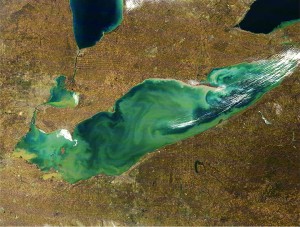
Case Study 1A: Lake Erie
Lake Erie is located in North America, situated on the International Boundary between Canada and the United States. Lake Erie’s north shore surrounds Ontario, Canada, and is a part of the U.S. states of Michigan, Ohio, Pennsylvania, and New York. It is the shallowest, most nutrient-enriched, and most biologically productive of the Great Lakes (Reutter, 2019). Lake Erie is 388 km long and 92 km wide at its widest point and has a surface area of 25,657 km2 making it the eleventh largest lake in the world (Reutter, 2019). Its mean depth is 62 feet or approximately 19m (Reutter, 2019). Lake Erie is a Great Lake, along with Lake Superior, Lake Michigan, Lake Huron, and Lake Ontario. These lakes span more than 750 miles and are one of the world’s largest surface freshwater ecosystems comprising 84% of North America’s surface fresh water and about 21% of the world’s supply of surface fresh water (US EPA, 2015).

Case Study 1B: Lake Erie
Eutrophication of surface water is a global concern. Of the five Great Lakes, Lake Erie has been most seriously affected by eutrophication (Makarewicz & Bertram, 1991). Lake Erie has a history of environmental degradation, with past agricultural and wastewater runoff leading to eutrophication throughout the lake (Makarewicz & Bertram, 1991). During the 1960s and 1970s, increased phosphorus inputs degraded water quality and reduced lake oxygen levels (Scavia et al., 2014). In response, phosphorus abatement programs were implemented in 1972 as part of the Great Lakes Water Quality Agreement (GLWQA) (Scavia et al., 2014). This was a relatively quick response, with evident decreases in total phosphorus (Scavia et al., 2014). Since the mid-1990s, however, Lake Erie is returning to a more eutrophic state (Scavia et al., 2014). This is indicated by increases in cyanobacteria and the resurgence of benthic algae growth as well as hypoxia (Scavia et al., 2014).

Case Study 1C: Lake Erie
To reduce Lake Erie’s eutrophication, there is ongoing restoration of the Great Black Swamp in Ohio. The Great Black Swamp once spanned 1,500 square miles from Fort Wayne, Indiana to Sandusky, Ohio (Eklov, 2019). Settlers in the late 19th century drained the wetland and converted it to be an area highly productive in agriculture (Eklov, 2019). Sediment and nutrients from the farm fields washed into the Maumee River, and ultimately into Lake Erie (Eklov, 2019). Today, the Great Black Swamp is one of the major sources of agricultural phosphorus seeping into the western portion of Lake Erie through the Maumee River (Eklov, 2019). Wetland scientists believe that restoring parts of the Great Black Swamp could help save Lake Erie from future eutrophication and algal blooms (Eklov, 2019).
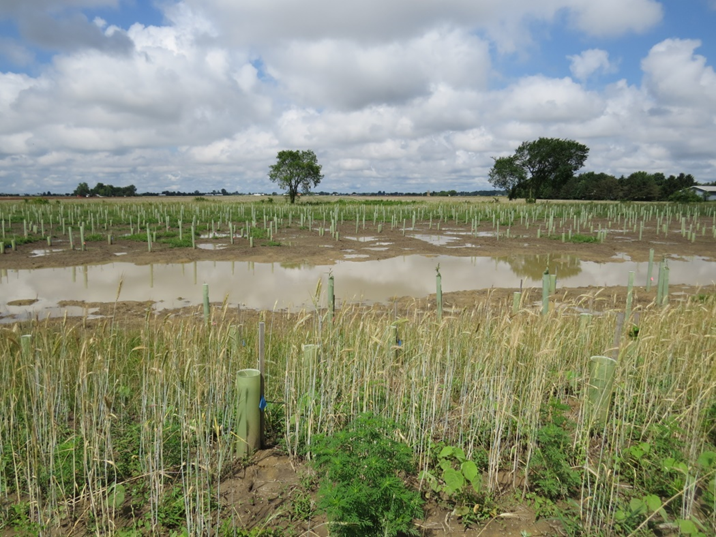
Case Study 1D: Lake Erie
Through ongoing restoration efforts, the Black Swamp Conservancy, a land trust and non-profit land conservation organization serving northwest Ohio, is re-creating a functioning floodplain complex to help create a cleaner Lake Erie (Eklov, 2019). This is being done to also expand habitat and support larger and healthier wildlife populations located in and around Lake Erie (Eklov, 2019). One restoration method involved restoring the natural hydrology of the swamp by removing drainage tile and restoring the swamp to create vernal pools and wetlands (Eklov, 2019). In addition, the Black Swamp Conservancy is transforming farm fields into aquatic wetland and upland habitat to trap as many nutrients as possible (Eklov, 2019). These restoration efforts occurred from 2017 to 2019 (Black Swamp Conservancy Habitat Restoration, n.d.). In a study on the restoration of the Great Black Swamp and its impact on Lake Erie, scientists believe that restoring and creating 20,000 - 40,000 hectares or 5-10% of the original wetlands in the Black Swamp to optimize nutrient reduction can reduce phosphorus loading by 480-960 metric tons per year or 18-37% of the annual phosphorus loading by the Maumee River to Lake Erie (Mitsch, 2017).

Case Study 2A: Lake Søllerød
Lake Søllerød is a post-glacial lake located about 12 miles north of Copenhagen, Denmark. It is about 13 hectares in area with a maximum depth of 9.8 meters and average depth of 5.6 meters. The lake is surrounded by parks, forests, meadows, organic cropland, and residential land.

Case Study 2B: Lake Søllerød
The lake has a history with wastewater pollution and very high phosphorus levels. While the phosphorus levels have decreased significantly over time with developments like wastewater treatment, the lake still suffers from algal blooms due to elevated phosphorus levels. Much of this phosphorus is stored in lake sediment and can mobilize if the sediment is disturbed. Apart from high nutrient concentrations, organic matter at the bottom of the lake cannot break down due to the anoxic conditions of the hypolimnion, which makes the water murky and smelly.

Case Study 2C: Lake Søllerød
Starting in July, 2019, a pilot project from the Technical University of Denmark tested an experimental method of reducing phosphorus concentrations in the lake by increasing the redox potential of lake sediments. Redox (or oxidation-reduction) reactions, like decomposition, require oxygen or another oxidant to accept electrons.
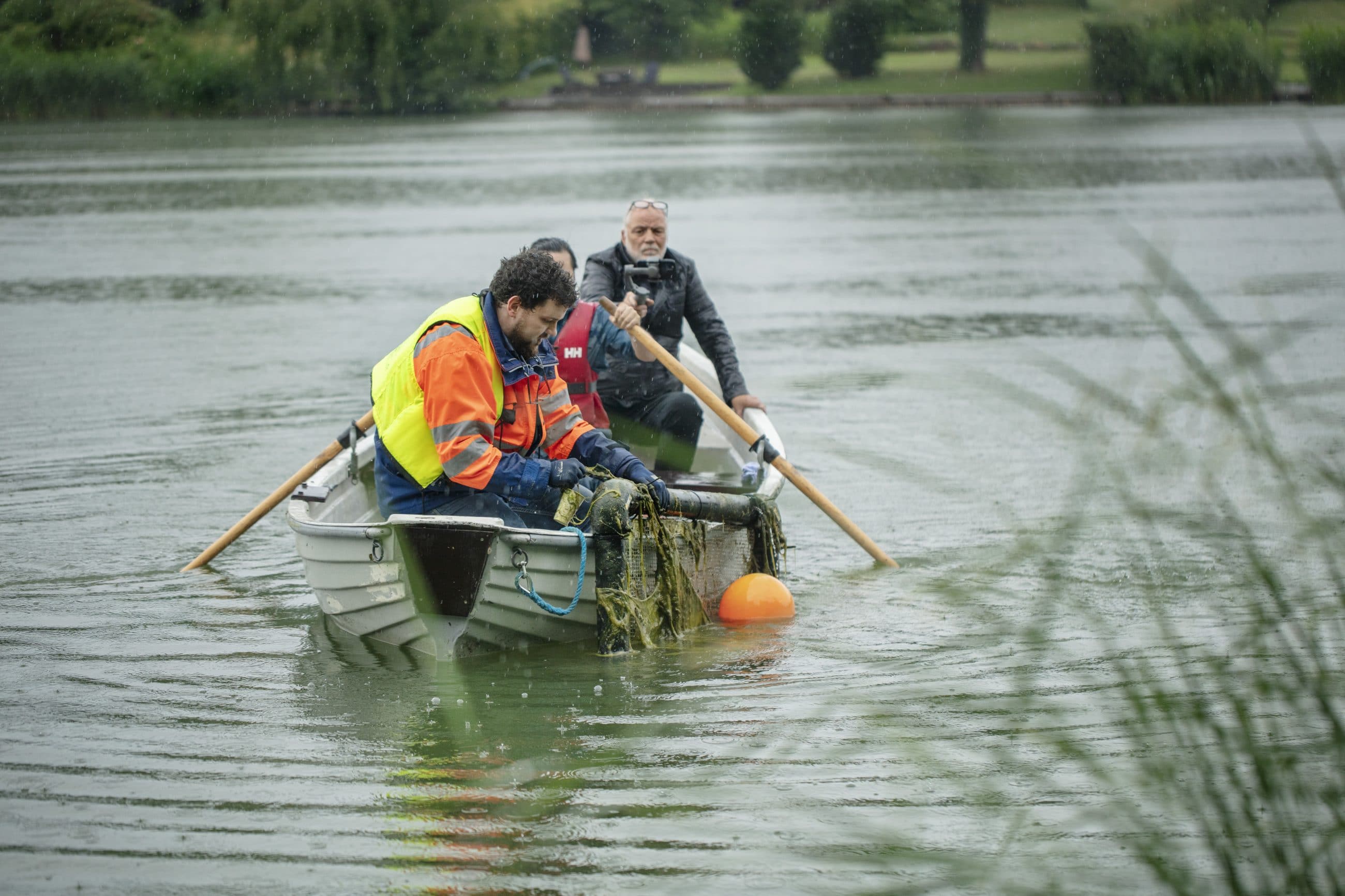
Case Study 2D: Lake Søllerød
The in-lake experiment involved two SMFCs, one resting on the bottom of the lake and one suspended in the water column. The bacteria transferred electrons from the lake sediment to an electrode (a conductor that’s part of an electrical circuit). The electrons then traveled up the circuit to the second SMFC. Because the suspended fuel cell was higher in the water column, oxygen was available for the electrons to reduce, completing the redox reaction. Rather than oxygenating or aerating the lake, the study sought to facilitate redox reactions in the absence of oxygen in the hypolimnion.

Case Study 3A: Loktok Lake
Loktak Lake is a freshwater lake located in Manipur, India. It is the largest freshwater lake located in South Asia, spanning an area of 26, 600 hectares (Loktak Lake | Ramsar Sites Information Service, 1990) with an average depth of 2.7 m (Wetland Complex, n.d.). Loktak Lake is known for its Phumdis, which are naturally occurring mats of floating biomass. Phumdis can also be shaped by humans. Loktak Lake is more than just a beautiful sight. It is a lifeline for local communities who depend upon fishing for their sustenance and livelihoods. It is important to note that Loktak Lake is a Ramsar Site, which is usually for wetlands, but Loktak Lake is considered to be between a lake and a wetland (Loktak Lake | Ramsar Sites Information Service, 1990).
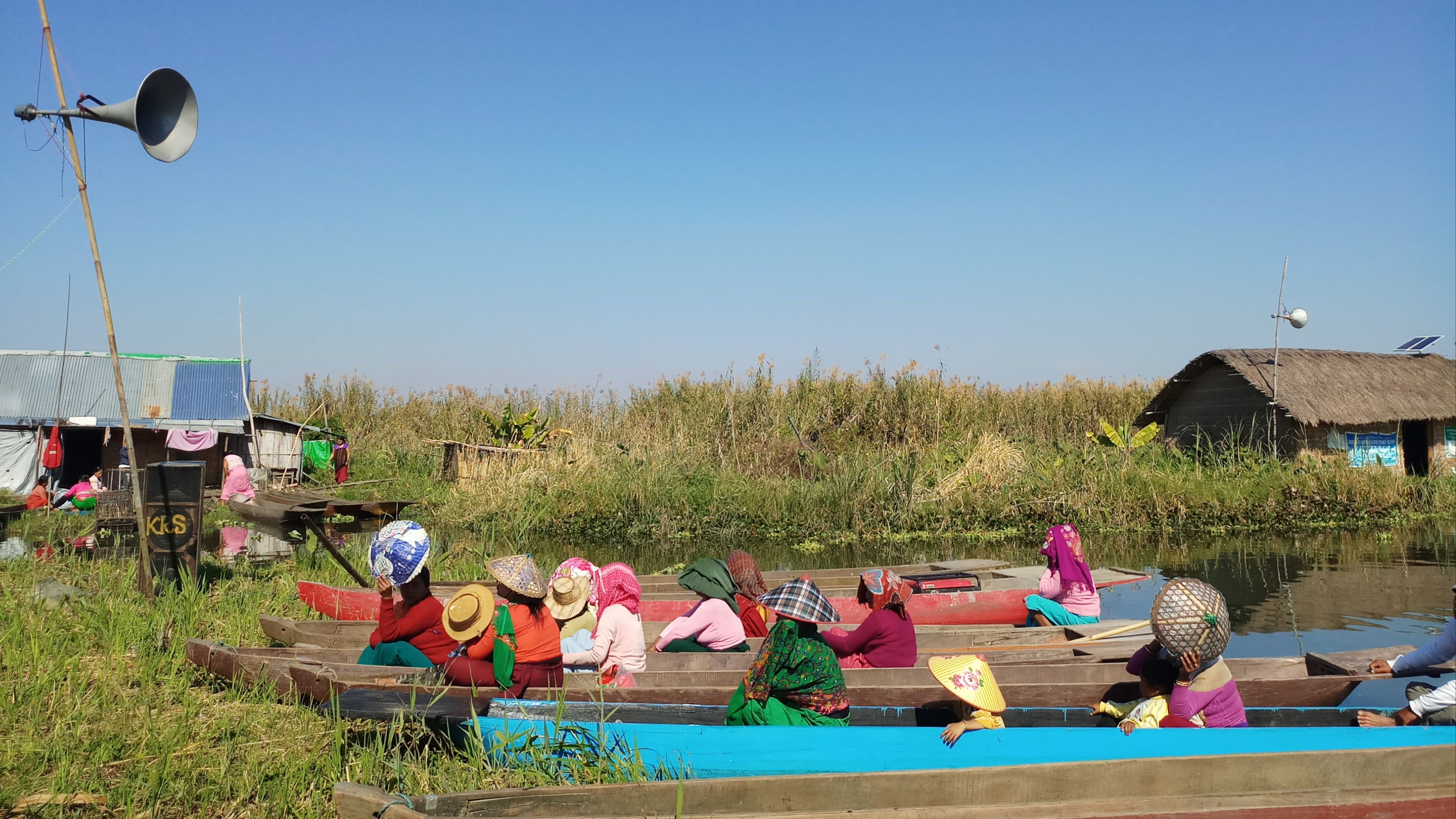
Case Study 3B: Loktok Lake
Loktak Lake has been greatdegraded mainly due to anthropogenic activity, including urban development, agriculture, and climate change (Kangabam et al., 2015). The waste products from urban sewage have flowed into the lake through different rivers (Kangabam et al., 2015). Urban sewage has deteriorated the lake and affected the ecosystem (Kangabam et al., 2015). Agriculture and the use of synthetic fertilizers and pesticides have also been a strong source of pollution for the lake (Kangabam et al., 2015). The long-term impacts of this immense degradation include a loss of flora and fauna, including fish, and the quality of the lake decreasing due to urban and agricultural waste (Kangabam et al., 2015).

Case Study 3C: Loktok Lake
The Champu Khangpok Floating Village is located amid Loktak Lake and consists of 140 families who depend upon the lake for their sustenance and livelihoods (4). Their lives are at risk with a declining fish population. The women fishers are at the center of a grassroots activism project that is working to restore the lake and protect the fish that are key to their sustenance and livelihoods (4). The women fishers have developed a two-pronged strategy for self-determination by creating two self-help groups (4). One group works to sustain their lives through a micro-financing venture in which funds are pooled (4). This group also involves thinking of ways to supplement their income (4). The other group works to garner strength through an established network amongst themselves and other fishers for lake conservation (4). It is important to note that while these self-help groups are ongoing to restore the lake, the Champu Khangpok village has not stopped fishing.
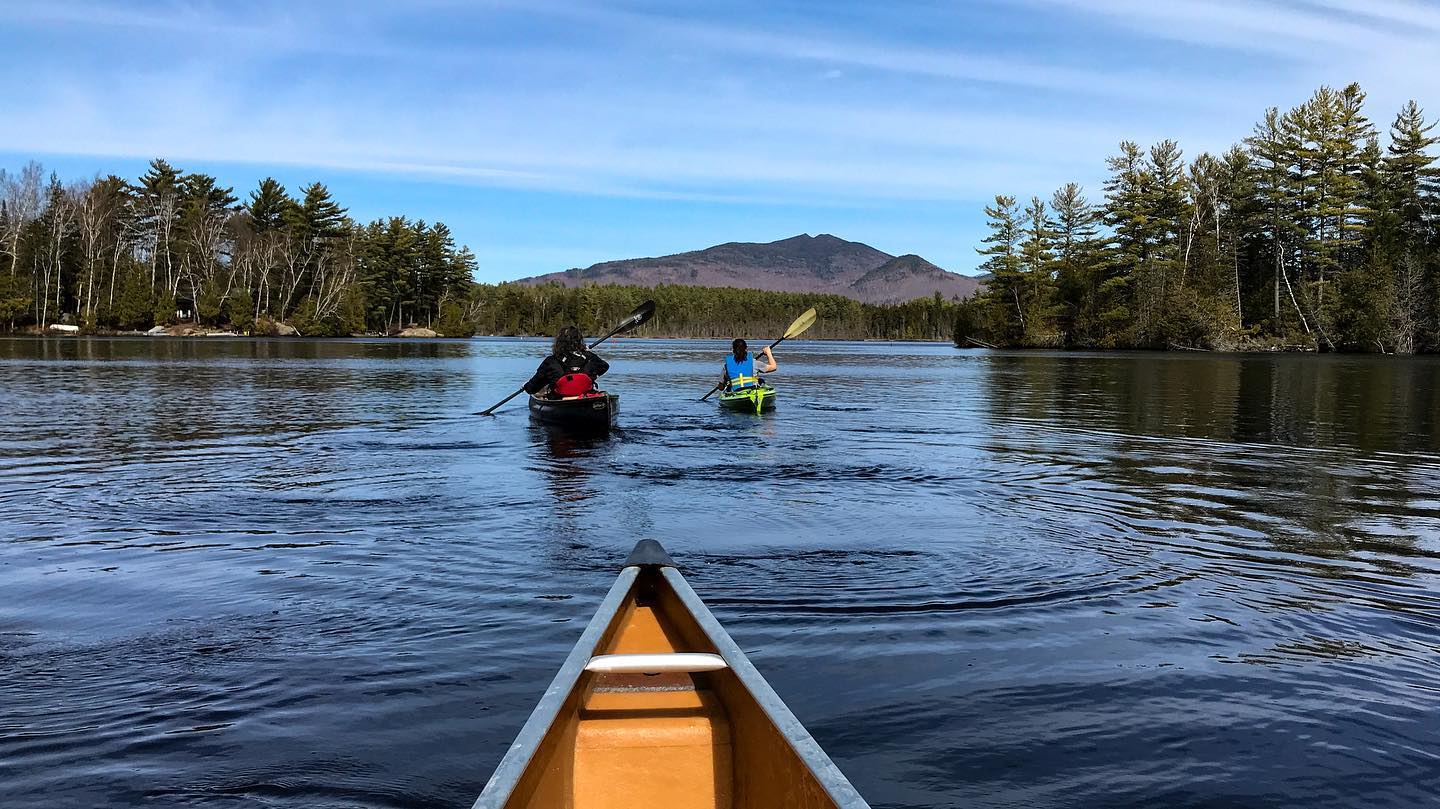
Case Study 4A: Lake Champlain
Lake Champlain is a freshwater lake in Vermont, U.S. and a small portion of Quebec, CAN. While not insignificant in size, its surface water covers 435 square miles, it is notably thin for its size, reaching only 12 miles at its widest point (Lake Champlain Land Trust, 2022). The lake has an average depth of 64 feet with a maximum depth of 400 feet. (Lake Champlain Land Trust, 2022). Lake Champlain provides various ecosystem services for the surrounding community, such as recreation, historical relevance (the lake is home to one of the oldest fossil reefs in the world!) and is the primary drinking water source for approximately 200,000 individuals (Lake Champlain Land Trust, 2022).
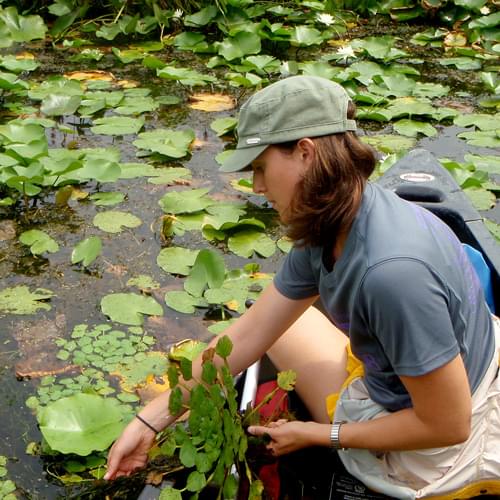
Case Study 4B: Lake Champlain
Lake Champlain is highly impacted by the introduction of Aquatic Invasive Species (AIS) with 51 known and monitored invasive species actively under management by organizations such as the Lake Champlain Basin Program. Of those 51 managed AIS, 7 are recognized as being high priority for removal, Alewife, Asian Clam, Eurasian Watermilfoil, Japanese Knotweed, Purple Loosestrife, Water Chestnut, and Zebra Mussel (Lake Champlain Basin Program, 2005).

Case Study 4C: Lake Champlain
In the first two years the plan identified the following actions to take to address the AIS problem: 1. Develop and maintain an ANS Advisory Committee to guide Plan implementation and set priorities on a regular basis; 2. Continue to strengthen the newly-established Adirondack Park Invasive Plant Program; and 3. Determine the population status of alewives in Lake Champlain (Lake Champlain Basin Program, 2005).

Case Study 4D: Lake Champlain
However, aside from the last priority, the plan failed to establish actionable goals and was never updated. The AIS issue is still very much present in Lake Champlain and stakeholders operate in a patchwork. From the perspective of the planners, this patchwork of actions was not a strong enough response to the issue at hand. But they failed to engage with the Champlain community in an effective way to produce the change they deemed necessary. Restoration ecologists and practitioners can learn a lot from initiatives like this which can create robust, scientifically backed plans and, in some ways, fail to put those plans into action due to their inability or unwillingness to meaningfully engage with stakeholders by meeting them where they are rather than exerting top-down directives.
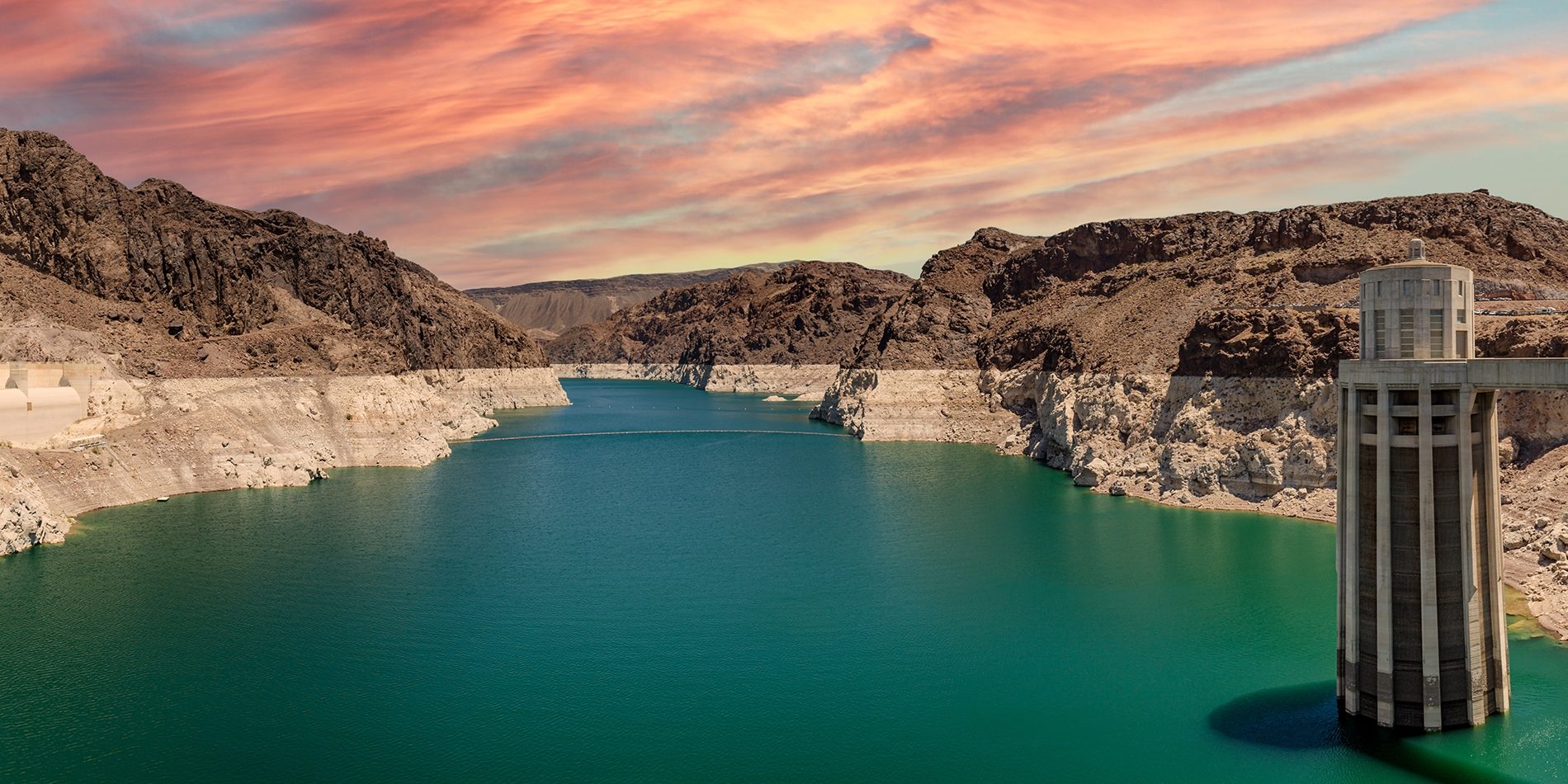
Case Study 5A: Lake Mead
At full capacity, Lake Mead is the largest reservoir in the United States by volume holding a maximum of 28.23 million acre-feet of water. It was formed following the construction of the Hoover Dam on the Colorado River, flooding 247 square miles of the Mojave Desert in the process. The dam was built to provide flood control, navigation, and generation of electrical energy. Water storage in Lake Mead has allowed for the development of the region supplying municipal water for 25 million people in the cities of Las Vegas, Henderson, North Las Vegas, and Boulder City, NV. Additionally, Lake Mead provides irrigation to agriculture in the Colorado Basin, Imperial Valley, and municipal growth in Los Angeles (Billington et al. 2005).
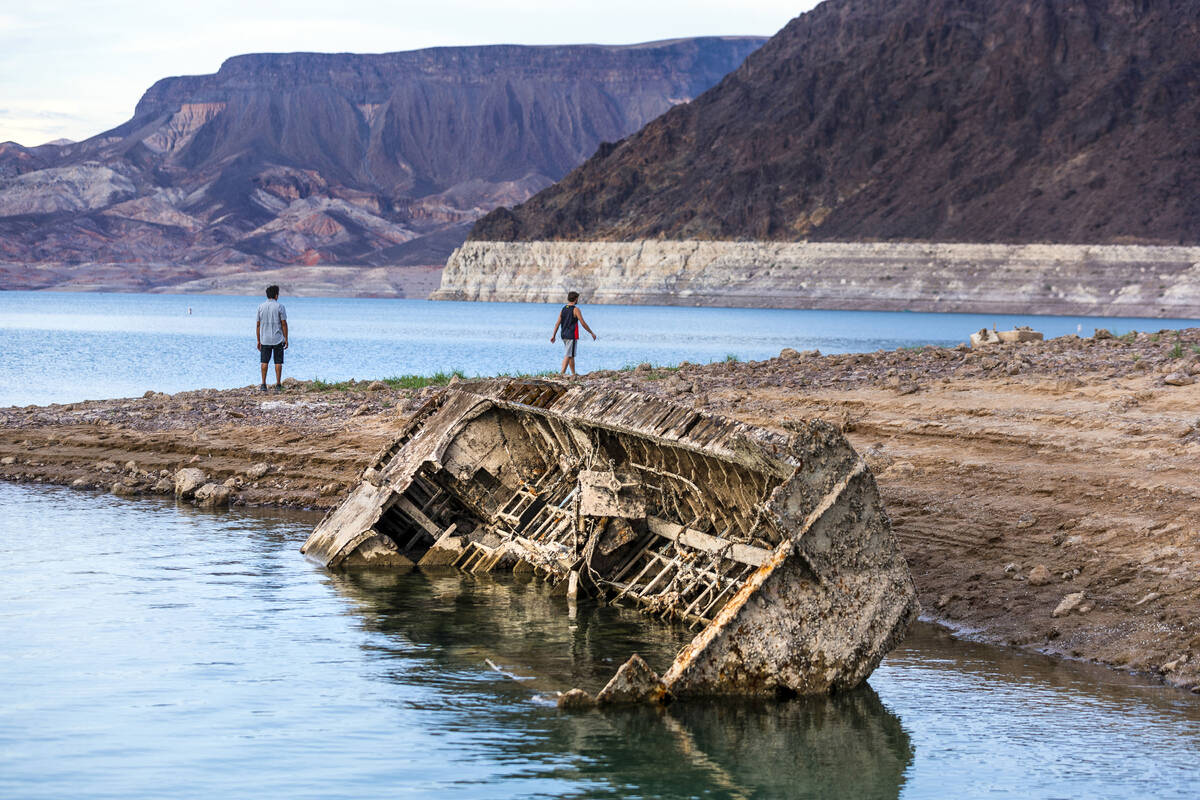
Case Study 5B: Lake Mead
However, the lake's water levels have seen a significant decline in recent years, primarily attributed to unsustainable water usage and the impacts of climate change, resulting in both human-induced and climate-induced droughts. In July 2022, the water level of Lake Mead reached a low point of 1041.30 feet, representing just 27% of its total capacity (NASA Earth Observatory, 2023). This decline is not an isolated event but rather part of a steady decrease observed since 1999 which poses significant challenges for ensuring water supply reliability, sustaining hydroelectric power generation, and preserving ecosystem health. It underscores the critical importance of implementing sustainable water management practices and developing adaptation strategies to address the evolving environmental conditions. In response, researchers have begun exploring the long-term viability of Lake Mead and the Hoover Dam, as well as the exploration of alternative water management solutions (Barnett, 2008; Wright & Kennedy, 2011; Yao et al., 2015).
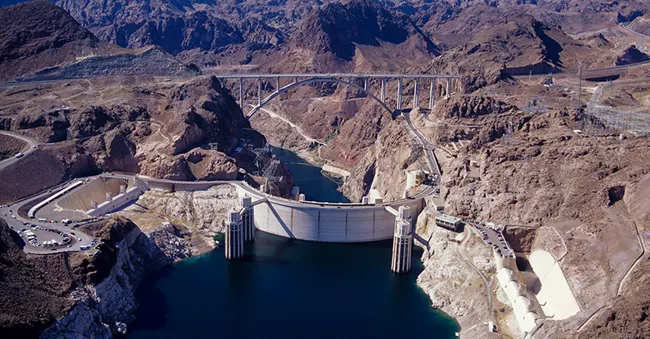
Case Study 5C: Lake Mead
In recent years, stakeholders ranging from governmental bodies to non-governmental organizations have turned their attention to the water held within Lake Powell, 600 miles upstream, considering it as potential solutions to a host of downstream challenges. This focus has given rise to the High-Flow Experiments.
Case Study 5D: Lake Mead
Conducted from the Glen Canyon Dam, the High-Flow Experiments involve the controlled release of a substantial volume of water over a condensed time frame, aiming to replicate natural flood events. These experiments serve dual purposes: first, they align with initiatives such as Fill Mead First, advocating for the prioritization of Lake Mead's water levels over those of Lake Powell. Second, they seek to revive ecological processes disrupted by the dam's operations, with particular emphasis on the Grand Canyon region (Bureau of Reclamation, 2016).

Case Study 5E: Lake Mead
By emulating natural flood patterns, the High-Flow Experiments provide valuable insights into sediment transport, erosion dynamics, habitat restoration, and the behavioral patterns of native fish species (Wright & Kennedy, 2011). This data informs comprehensive strategies aimed at balancing human water needs with the imperative of ecosystem preservation, thereby addressing the intricate water management challenges prevalent in the region.
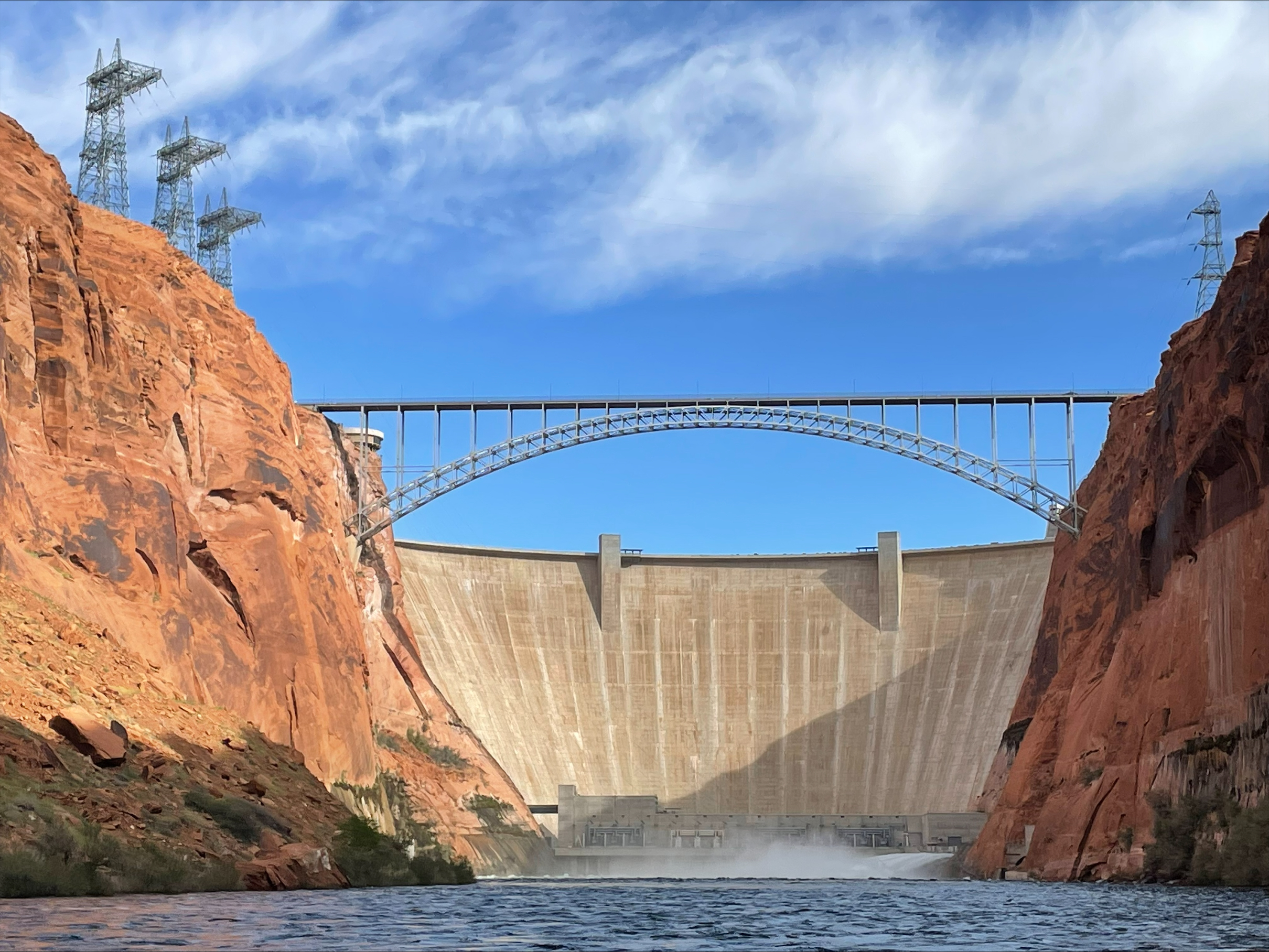
Case Study 5F: Lake Mead
Lake Mead stands as a testament to human engineering rather than a product of natural processes. Its formation was orchestrated through the monumental endeavor of constructing the Hoover Dam, requiring significant expenditure of energy and material resources. However, the maintenance of this reservoir and dam demands ongoing investments of resources, a demand that escalates over time due to the compounding effects of interference with natural systems.

Case Study 5G: Lake Mead
Dr. Ryan Emanuel emphasizes the complexity of ecological restoration efforts in the context of human-made lakes like Lake Mead, stating that "The formulaic nature of restoration presents challenges, as ecosystem functions can’t simply be extracted from one place and expected to serve the same role elsewhere” (personal communication, 2024). This perspective sheds light on the challenges of restoring ecosystems surrounding human-made lakes like Lake Mead, emphasizing the need for holistic approaches that address underlying issues such as excessive water and energy consumption. Until these root causes are addressed, restoration efforts for Lake Mead will likely be only partially effective, considering its primary functions as an engineered system for power generation and flood mitigation. As Dr. Emanuel put it, "While new ecosystems may emerge, fundamentally, these are engineered systems serving other purposes like drinking water or irrigation" (personal communication, 2024).
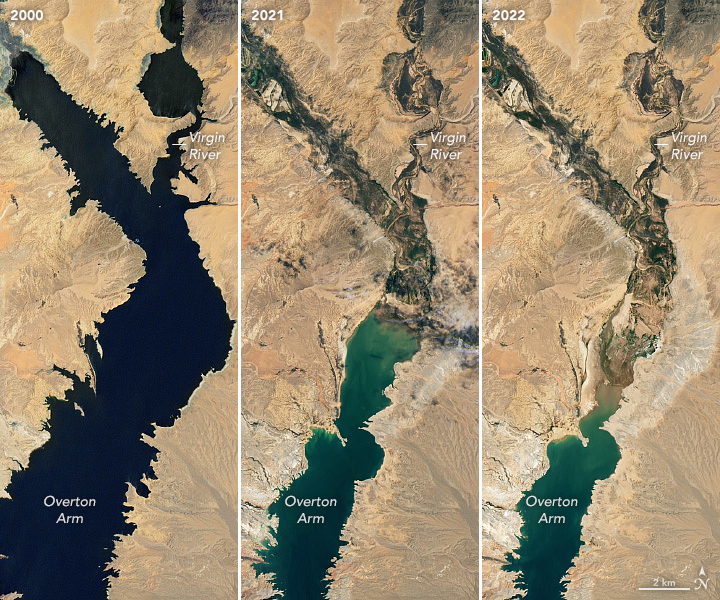
Case Study 5F: Lake Mead
The emulation of natural systems may not fully compensate for the environmental degradation wrought by human activities, and high-flow releases may not adequately alleviate the challenges confronting both human and non-human inhabitants of the Colorado River Basin. High-Flow Experiments serve as a temporary measure in the restoration efforts, sidestepping the fundamental issues stemming from the existence of the Hoover Dam and our excessive water and energy consumption. Until we address the root causes underlying the challenges faced by Lake Mead, restoration efforts are bound to be only partially effective.
Monitoring and Evaluation
In the realm of ecological restoration of lakes, the efficacy of our efforts hinges on the robustness of our monitoring and evaluation methods. Monitoring and evaluation serve as the compass guiding our endeavors, enabling us to navigate the complex web of ecological interactions and gauge the effectiveness of our interventions. One approach involves comprehensive water quality assessments as done in Lake Erie with the Great Lakes Water Quality Agreement , encompassing parameters such as nutrient levels, dissolved oxygen concentrations, and pH levels (Scavia et al., 2014). These metrics provide invaluable insights into the health of the lake ecosystem, offering a snapshot of its current state and highlighting any deviations from desired ecological targets.
Furthermore, the integration of biological monitoring, as done in conjunction with the High-Flow Experiments and Loktak Lake Restoration (Wright & Kennedy, 2011; Bureau of Reclamation, 2016; Kangabam et al., 2015) including the analysis of aquatic flora and fauna populations, offers a holistic perspective on ecosystem dynamics, elucidating the intricate interplay between different organismal communities and their response to restoration initiatives. Data and anecdotes from biological monitoring are also able to exert significant influence on stakeholders, motivating them to prioritize and engage in restoration initiatives.
Moreover, employing innovative techniques such as remote sensing and GIS (Geographic Information System) technology can enhance the precision and efficiency of our monitoring endeavors. Remote sensing enables the assessment of large-scale ecological patterns and changes over time such as in tracking reservoir depth and extent in Lake Mead (Bureau of Reclamation, 2016). GIS platforms, on the other hand, serve as powerful tools for data integration, visualization, and spatial analysis, enabling stakeholders to overlay diverse datasets and derive actionable insights. By leveraging these advanced methodologies in tandem with traditional field-based monitoring approaches, we can construct a comprehensive framework for assessing the success of lake restoration efforts.
Ultimately, monitoring methods are just one tool in the toolkit of restoration ecologists. Advanced monitoring techniques can be extremely useful, helping practitioners design efficient and effective restoration activities. However, it is important to recognize that these methodologies yield metrics and these metrics do not tell the full story. Utilizing these metrics to tell stories about the subjective experiences of humans and non-humans is an important step in translating science into action. Producing accessible, visually appealing maps and sharing trail camera footage of wildlife are extremely effective political and social motivators for restoration because they capture snapshots of the full picture: big and small.
Conflicts with lake restoration
While lake restoration has provided many ecosystem and social benefits across the world, the methods necessary to maintain them often create their own set of challenges. Many of our lakes are artificial, and thus located somewhere where they would not naturally occur. For this reason, lake restoration raises an important question: when should we restore lakes and when should we allow the ecosystem to return to its natural state?
The city of Olympia, Washington, has been grappling with this exact question regarding its Capitol Lake. The lake was created by a dam in 1951 and had been a recreation site for the city until 2009, when it was closed due to various issues, including sedimentation, bacteria contamination, and an invasive snail. The city has decided that the best way to restore the lake is to return it to its pre-lake state ( Withycombe, 2023 ).
Kristopher Peters, chair of the Squaxin Island Tribe, hailed the state’s October decision to restore the estuary, saying then in a statement that the move marked a “meaningful step toward the larger effort to improve the health of the Deschutes Watershed for native species.” ( Withycombe, 2023 )
The area was originally a marsh estuary. Restoring the lake to an estuary would not only improve water quality, but also return an important cultural site to the Squaxin Island Tribe, who have historically lived around the estuary and fished salmon in the area ( Withycombe, 2023 ).
The Capitol Lake restoration plan is a prime example of an instance in which maintaining the lake was harming the broader environment. It is important for restorationists to keep in mind that what is good for a lake may not be beneficial to the ecosystem at large.
Conclusion
Lakes are a source of drinking water and sustenance for countless individuals and communities worldwide. And yet despite their importance, lakes are diminishing at alarming rates– largely due to human activity. By examining the different types of restoration and evaluating real-world situations we, as future practitioners can make better informed decisions regarding our restoration projects.
